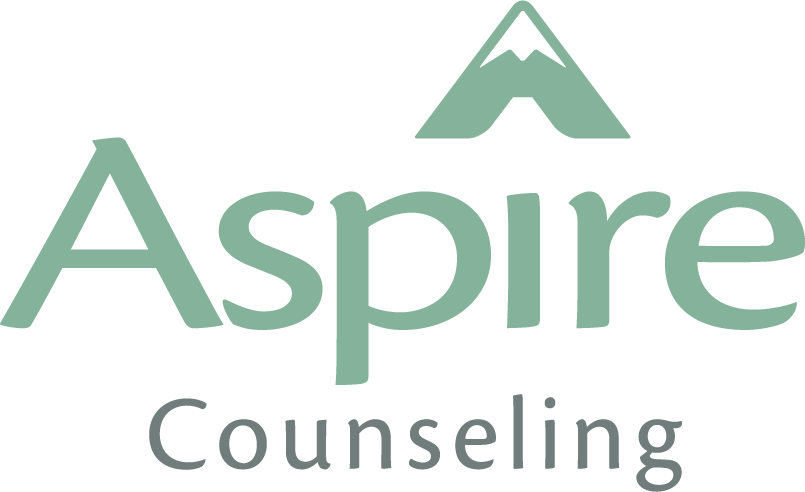Exposure Therapy for Social Anxiety: Can Facing Your Fears Really Help?
If you’ve ever felt your heart race just thinking about speaking up in a meeting, introducing yourself at a social event, or even making small talk with a stranger, you’re not alone. Social anxiety is incredibly common. In fact, it’s one of the most frequent reasons people seek therapy at Aspire Counseling. Whether you’re a high school student worried about giving a class presentation or a professional dreading an upcoming work event, social anxiety can make everyday situations feel overwhelming.
The good news? There are effective, research-backed ways to overcome social anxiety—and exposure therapy is one of them. But before you worry that we’re going to suggest you jump straight into your biggest fear, let’s talk about what exposure therapy really looks like and why it doesn’t have to be terrifying.
What Exactly Is Social Anxiety?
Social anxiety isn’t just being shy or introverted. It’s a deep, often overwhelming fear of being judged, embarrassed, or humiliated in social situations. For some, it’s triggered by speaking in public or meeting new people. For others, it’s as simple as making a phone call or asking a question in class.
High school students might avoid participating in class discussions or attending social events. Professionals might avoid networking opportunities, speaking up in meetings, or going for promotions that require more public interaction. Over time, this avoidance can limit opportunities and reinforce the belief that social situations are dangerous.
How Does Exposure Therapy Help with Social Anxiety?
You’ve probably heard the advice before: "Just face your fears." But if you’ve ever tried this and walked away feeling even more anxious, you know it’s not that simple. Exposure therapy is based on this concept, but with one key difference: it’s guided, gradual, and done with the support of a trained anxiety therapist.
In exposure therapy, you slowly and intentionally face the situations you fear—starting with things that feel uncomfortable but manageable. Over time, with repeated exposure and the right support, your brain starts to learn that these situations aren’t as dangerous as they feel.
Instead of diving headfirst into your worst-case scenario, you and your therapist create a personalized "exposure hierarchy" — a list of situations ranked from least to most anxiety-provoking. You work through them at a pace that feels right for you.
Why Not Just Try to "Get Back on the Horse" on Your Own?
It’s a fair question. After all, if facing your fears works, why do you need a therapist? The reality is, trying to face your fears alone—without preparation, support, or the right tools—can actually backfire.
Imagine this: You’re terrified of public speaking. One day, you force yourself to give a big presentation at work without any preparation or coping strategies. You panic, feel humiliated, and vow never to put yourself in that situation again. What just happened? Your brain learned that public speaking is dangerous and to be avoided at all costs.
With a therapist trained in exposure therapy, the process looks very different. Instead of starting with a huge presentation, you might begin by practicing saying your opinion in a small team meeting. Or even smaller than that—maybe you start by making eye contact with a colleague or practicing a few assertive phrases at home. You’re not thrown into the deep end; you’re gently wading in, with someone there to support you every step of the way.
What Does an Exposure Hierarchy Look Like?
Here’s an example of what a social anxiety exposure hierarchy might look like for a professional struggling with workplace interactions:
Practice making small talk with a barista or store clerk.
Say hello to a coworker in the hallway.
Ask a question during a small team meeting.
Practice giving a short presentation to a trusted colleague.
Attend a networking event and stay for 15 minutes.
Volunteer to give a short presentation at a larger meeting.
Lead a full presentation or workshop.
For a high school student, the list might include:
Make eye contact and smile at a classmate.
Ask the teacher a simple question after class.
Say hello to a peer at lunch.
Join a small group discussion in class.
Participate in a class presentation.
Attend a school dance or social event.
Every hierarchy is tailored to the individual, and you move through it at your own pace. Your therapist will celebrate your successes and help you navigate setbacks without judgment.
Will Exposure Therapy Be Scary?
It’s normal to feel nervous about starting exposure therapy—after all, you’re intentionally confronting things that make you anxious. But with the right therapist and a gradual approach, it doesn’t have to feel overwhelming. The goal isn’t to push you into panic; it’s to build your confidence one small, manageable step at a time.
At Aspire Counseling, we’re not here to throw you into situations you’re not ready for. We’re here to support you, help you prepare, and work through the anxiety together. And along the way, we’ll teach you practical coping skills—like calming breathing techniques and thought-challenging strategies—to help you manage anxiety in the moment.
How Do I Know If Exposure Therapy Is Right for Me?
If social anxiety is holding you back from fully living your life, therapy can help. You don’t have to struggle through this on your own. And you certainly don’t have to face your biggest fears all at once.
At Aspire Counseling, our therapists specialize in working with social anxiety. We’ll meet you where you are, help you understand your anxiety, and develop a plan that feels doable. Whether you’re a student trying to feel more comfortable at school or a professional looking to build confidence in the workplace, we’re here to walk with you every step of the way.
If you’re ready to explore how exposure therapy might help you move forward, reach out to Aspire Counseling today. Together, we can help you take back control and build a life that feels more confident, connected, and fulfilling.
